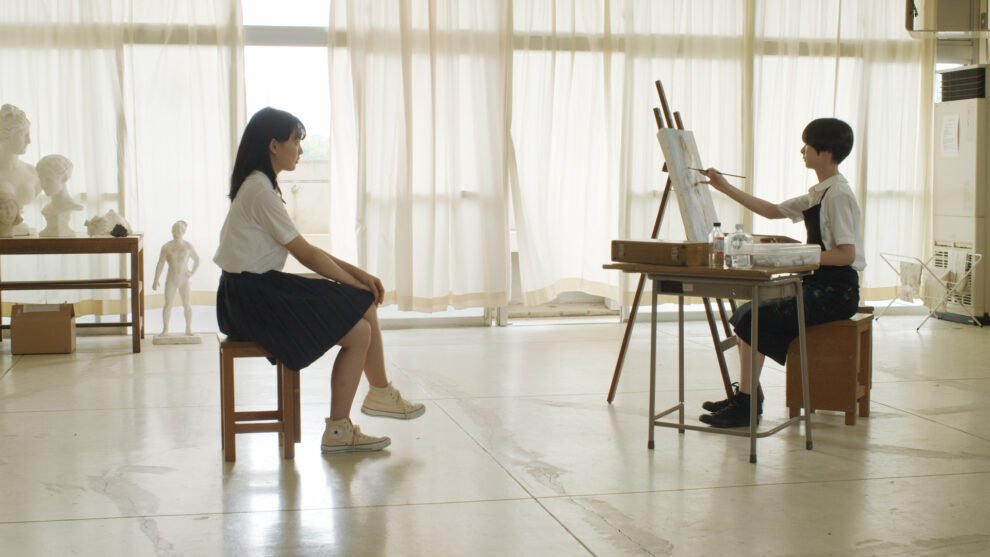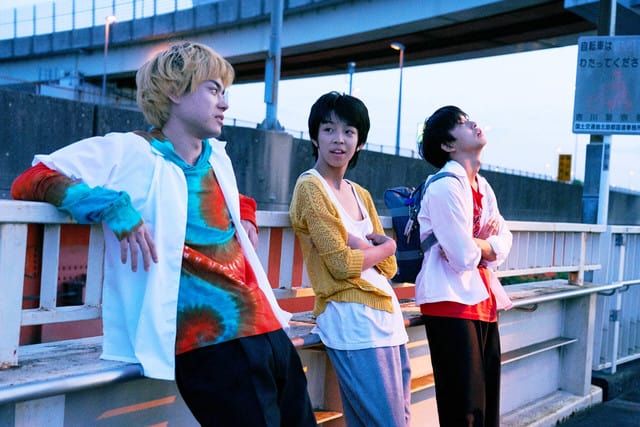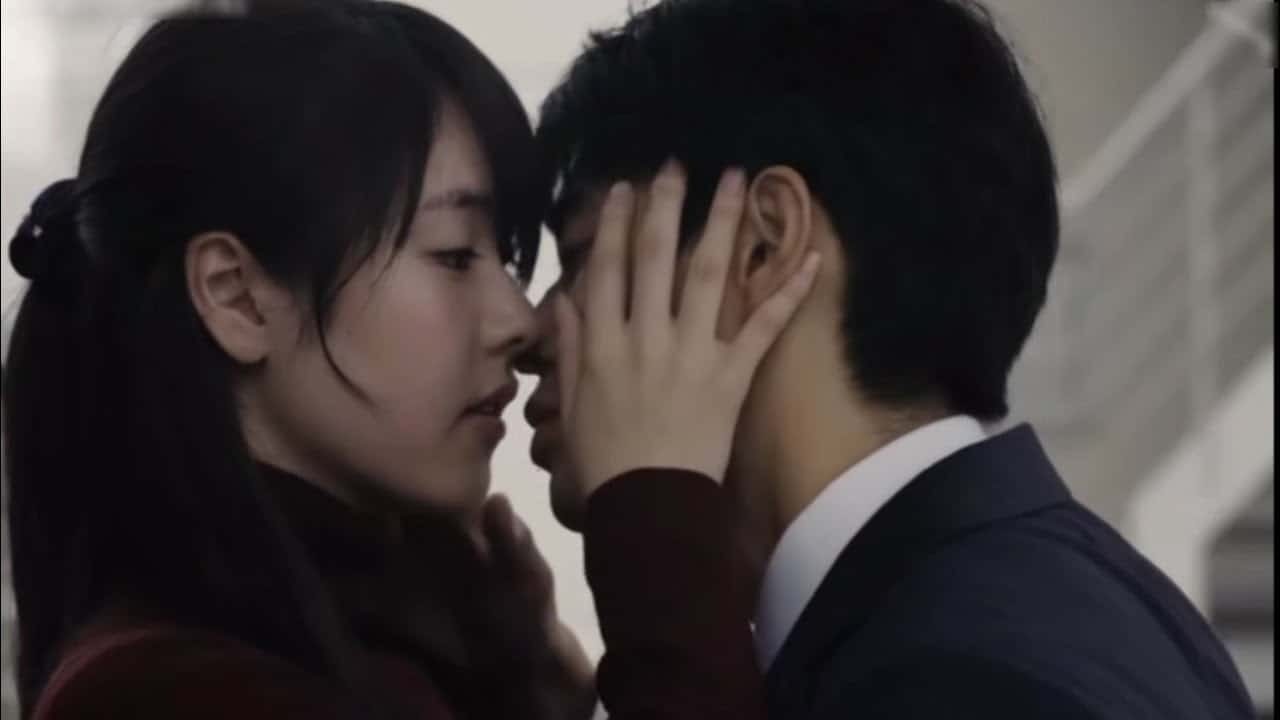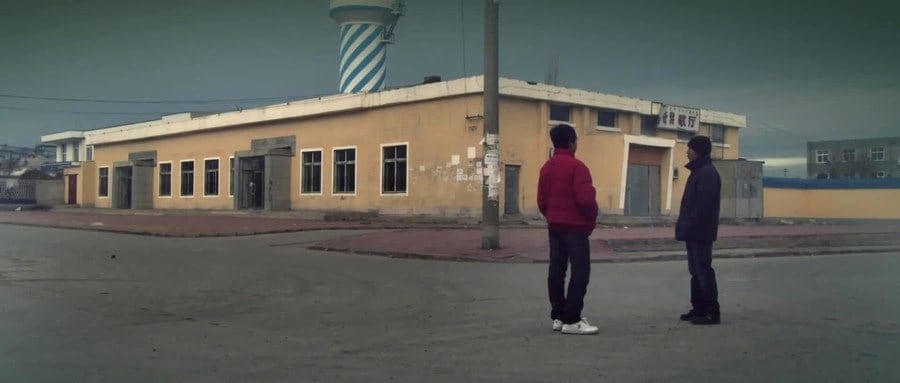The subtle, frequently completely uneventful, slow-burning family/school/social drama is a genre the Japanese have perfected, in one of the central nucleuses of the local industry. The issue, however, is that there are so many entries in the category, that all films start to look the same after a point. As such, and frequently in the reviews of AMP, we examine if and what makes these movies stand out, as much as the actual title itself. Since “A Muse Never Drowns” definitely falls under the particular characterization, this is the method I will also follow here.
A Muse Never Drowns is streaming as part of JFF+ Independent Cinema

The story starts with a splash, literally. Member of the local high school art club in the seaside town she lives in, Sakuko falls into the sea while sketching a boat. Another classmate, Saibara, who had already started painting her from across the dock, captures the whole deed, coming up with a painting that eventually wins an award, which leads to it being displayed in school permanently. Sakuko, however, does not see the whole thing positively, both for the unwanted attention it draws to herself, and because the whole thing happened without her permission. When Saibara announces that she will also make a portrait of Sakuko, the tension between the two becomes even more palpable, while Sakuko eventually decides to drop out of painting and instead create her own “craft” mostly from reusable materials. Eventually, and mostly through the insistence of her “enemy”, the two girls come closer, finally finding someone to trust and open up, something they both seemed to need from the get go.
Check also this interview
Even if reaching there from a rather long road, Nozomi Asao essentially directs a movie that shows how art can help people communicate, especially those who have trouble doing so. In order to get there, she also walks her story through a coming-of-age path that shows the issues teenagers face, with Sakuko's inability to adapt to her life with her pregnant stepmom and Saibara's intense introvertedness emerging as the main problems the two have. The way the two cope with their issues, the former by building a boat and the second by finding a muse in an awkward way to connect with one of the few persons she feels she can, is both entertaining and realistic, especially in the way the frustration of the two is presented on screen.
In that regard, the acting of the two girls emerges as one of the best traits of the movie. Kiku Uehara as Sakuko and Mimori Wakasugi as Saibara highlight both their similar frustrations and the way their relationship changes while changing them too, in the most naturalistic but also pleasant to watch way. Yohta Kawase as the former's father is always an appealing presence and this movie is not an exception.
In terms of visuals, the presentation of the seaside area and the school border on the idyllic, in an approach that is quite fitting. However, the images that stand out are the ones where Sakuko is building her boat, and particularly the way she dismantles electronic devices in order to do so. The ending result is probably the most memorable moment of the film, at least in visual terms. The editing, expectedly, results in a relatively slow pace that is, again, fitting, while in combination with the subtle music, Asao implements a sense of quirkiness that works well for the narrative.
There is nothing wrong with “A Muse Never Drowns” maybe with the exception that the director could have moved the relationship of the two girls further forward but decided not to. However, there is nothing spectacular either, and the movie ends up being another one in a plethora of similar ones, solely addressing fans of the particular category.















